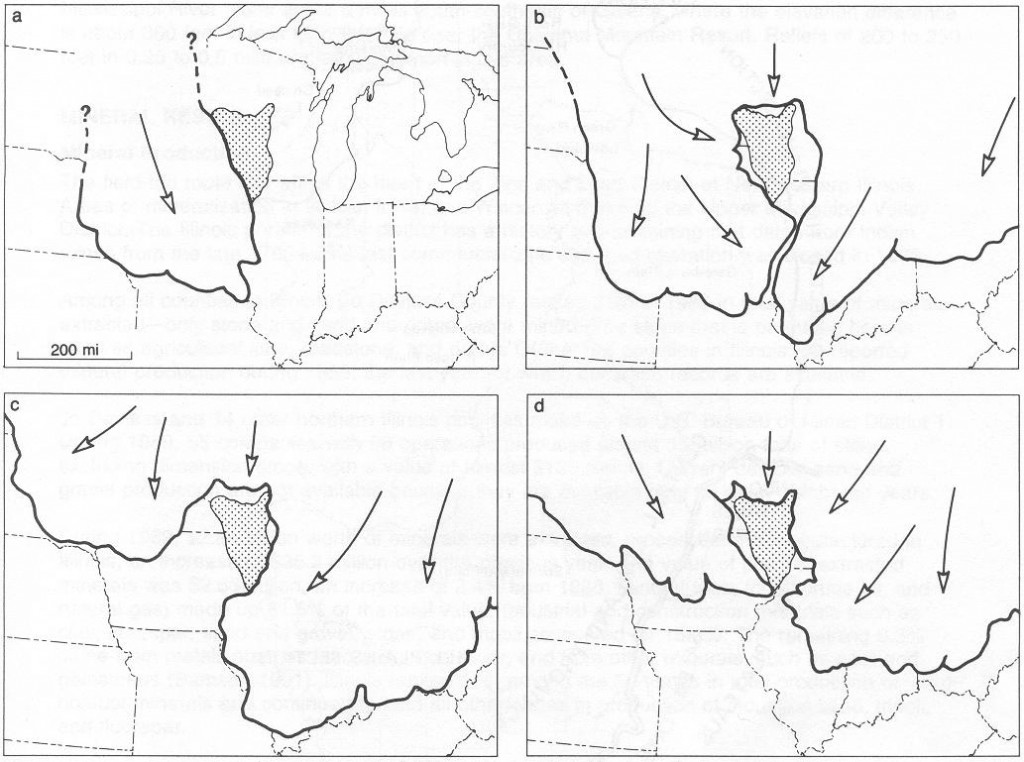![]() Tucked into the corner where Minnesota, Wisconsin, and Iowa meet there’s a special area with a Quaternary history that sets it apart from the rest of the northern United States.
Tucked into the corner where Minnesota, Wisconsin, and Iowa meet there’s a special area with a Quaternary history that sets it apart from the rest of the northern United States.
At the Last Glacial Maximum, the Des Moines lobe lay to the west of this area and the Green Bay lobe lay to the east. But in this area, the land surface was not covered with ice. For this reason, extreme southeastern Minnesota, northeastern Iowa and western Wisconsin together are known as the Driftless Area, because drift is an old name for till, and where there were no glaciers, no till could be deposited.
Even before the last glacial period, the Driftless Area seems to have uniquely escaped the terrain smoothing, till depositing influences of the ice sheets. (Play with this animation to watch southeastern Minnesota avoid glacial advance after glacial advance.) The map below shows the maximum extent of glaciers at (a) 1 million years ago, (b) ~600,000 years ago, (c) ~250,000 years ago (the Illinoian glaciation) and (d) ~22,000 years ago (Wisconsinan glaciation). In all of those reconstructions, there’s a stippled doughnut hole that defines the Driftless Area.
While in most parts of the Upper Midwest, the Paleozoic stratigraphy is buried under glacial deposits, millions of years of uninterrupted erosion have spectacularly dissected the landscape of the Driftless Area, creating 150+ m bluffs and narrow valleys. This dissected landscape stands out in sharp contrast to the flatter glaciated areas which surround it, as shown in the image below.
On the ground, the topography is even more dramatic, particularly along the Mississippi River valley. In the image below, two hillsides part of Great River Bluffs State Park in Minnesota show the steepness of relief that can be found in the area.
Growing up in this region, I always wondered why people said the Midwest was flat!
—
*If anyone can help me track down the full citation of this article, I’d be most appreciative. I borrowed the image from here.






Comments (21)
Links (2)-
-
Pingback: The flat of the land | Highly Allochthonous
Pingback: Geology Links for January 19th, 2011 | The Geology News Blog